From Oct. 7, 2022 to Jan. 8, 2023, the Ducal Palace in Mantua is organizing a major exhibition on Pisanello (Antonio Pisano; Pisa/Verona, ante 1395 - Naples, 1455), on the occasion of the 50th anniversary of the exhibition on the same artist curated by Giovanni Paccagnini, with which one of the most important acquisitions in the field of art history in the 20th century was presented: the discovery in the rooms of the Ducal Palace in Mantua of the decorative cycle of chivalric theme painted in mixed media around 1430-1433 precisely by Pisanello.
The Palazzo Ducale exhibition, entitled Pisanello. The Tumult of the World and curated by Stefano L’Occaso, is part of a wide-ranging and long-term program to enhance the work and the Hall dedicated to the artist, along with the adjacent Hall of the Popes. In fact, the layout of the entire room (measuring 9.50 by 7.50 meters: three out of four walls also revealed the sinopites of the frescoed composition; 100 square meters in all between frescoes and sinopites) is permanently rethought for the best enjoyment of an exceptional find of the Italian artistic heritage. The project aims to restore full legibility of the paintings, which were torn out and relocated more than 50 years ago, thanks to a new lighting system and an elevated platform that for the first time places the visitor at a close distance from the walls (until now the floor was at a much lower elevation of 110 cm than when the work was created). The permanent intervention in the Pisanello hall has the design support of the Milan Polytechnic, territorial pole of Mantua, under the supervision of Eduardo Souto de Moura; the temporary part of the installation is designed by Archiplan Studio, which also provided all the executives.
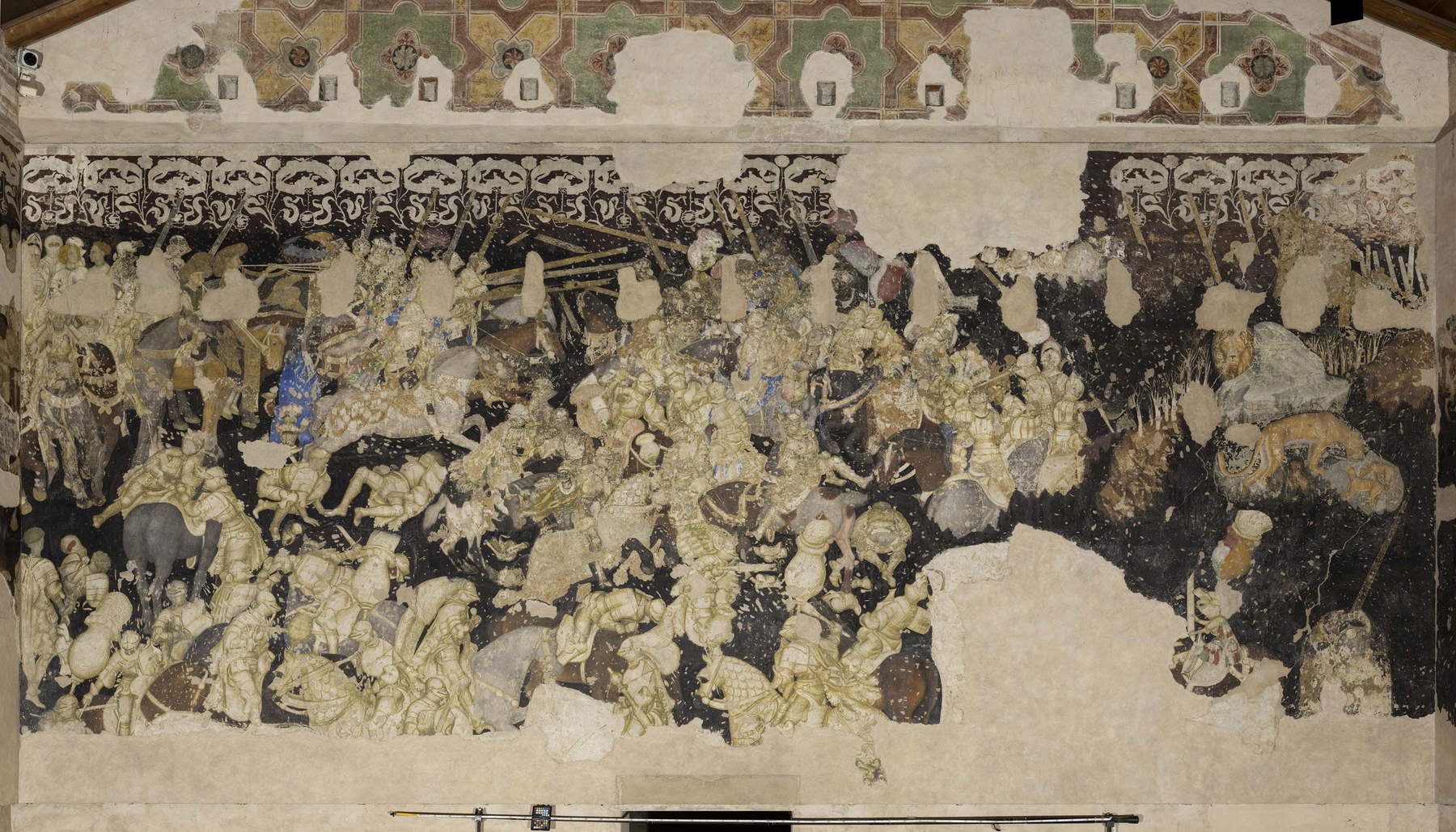

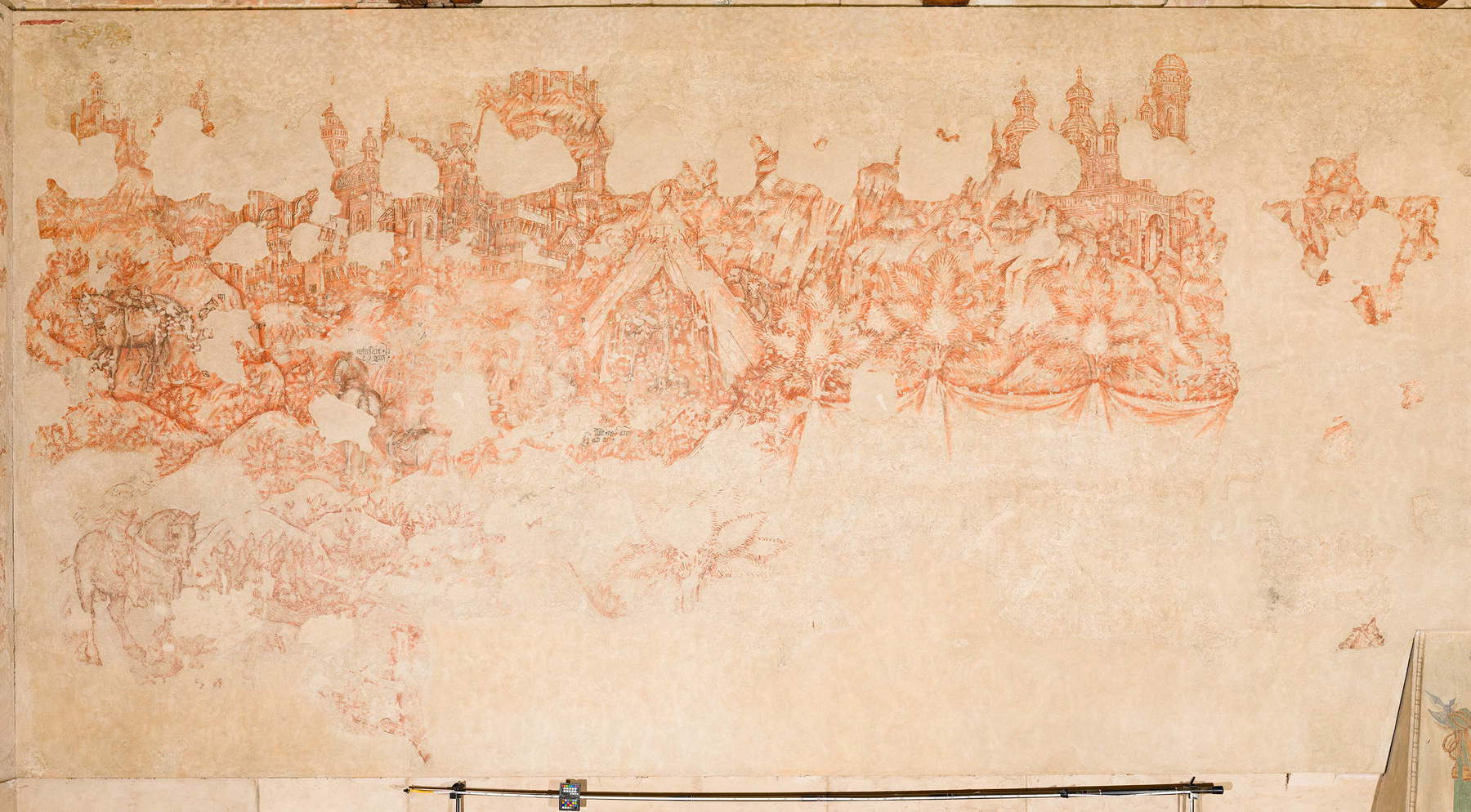
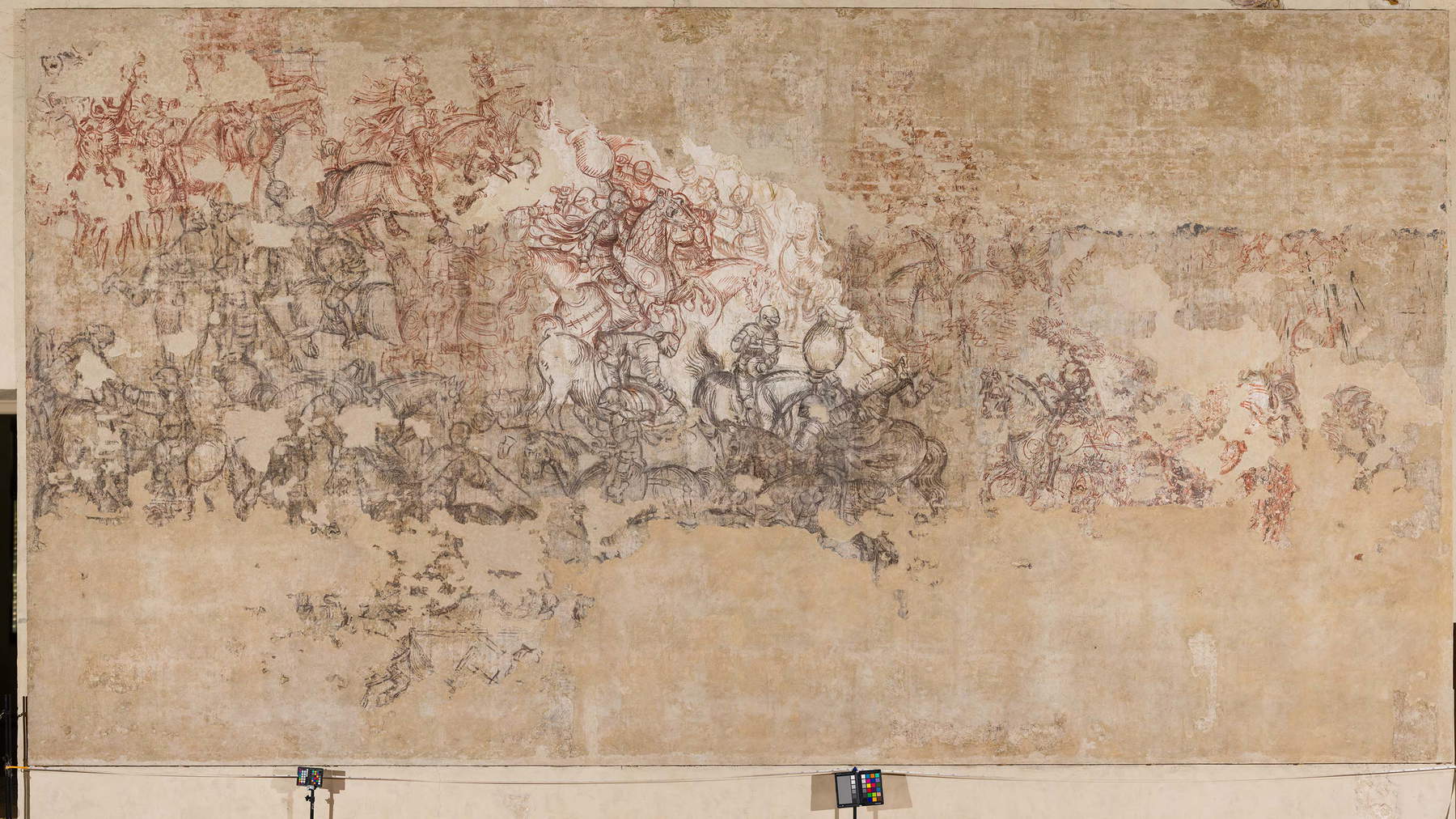
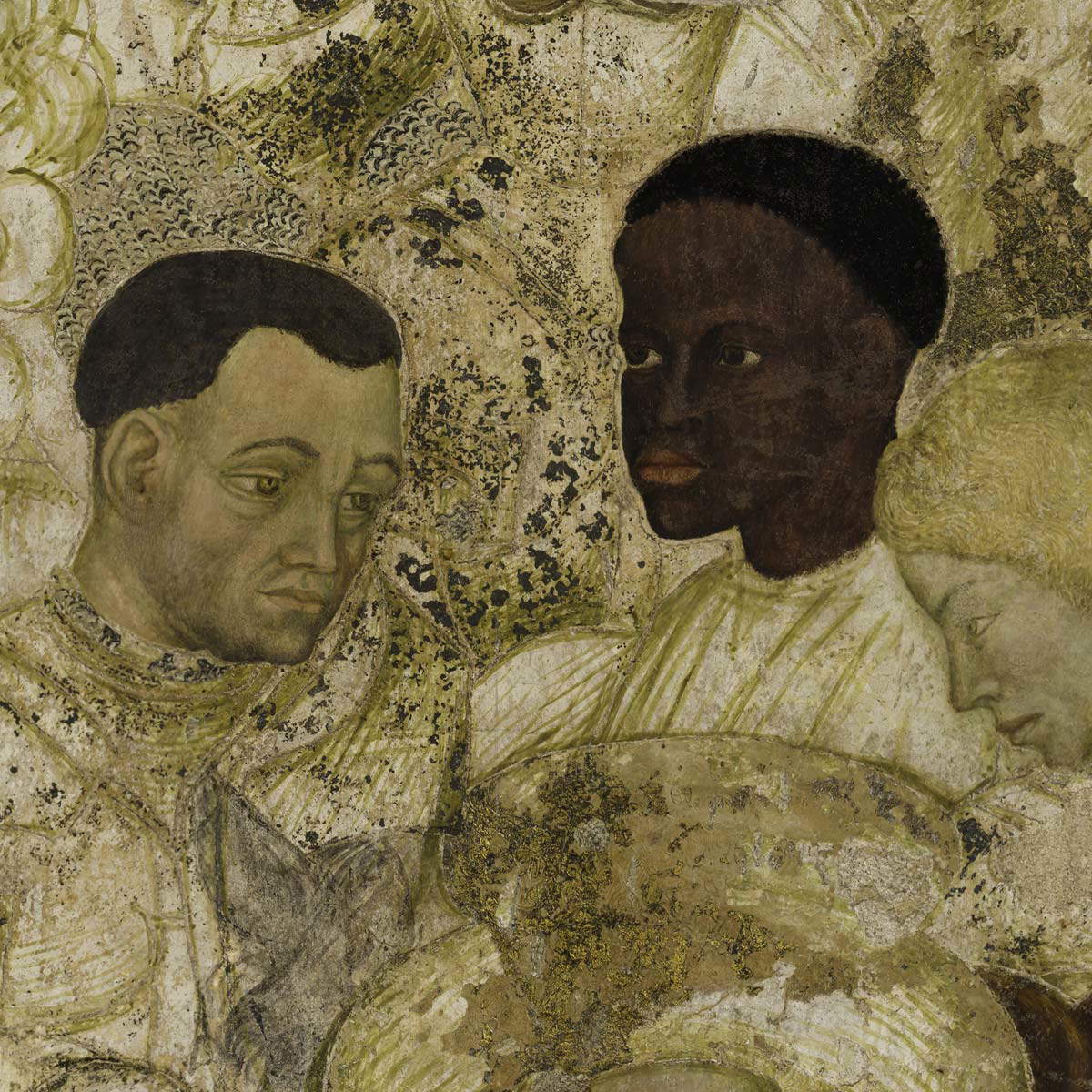
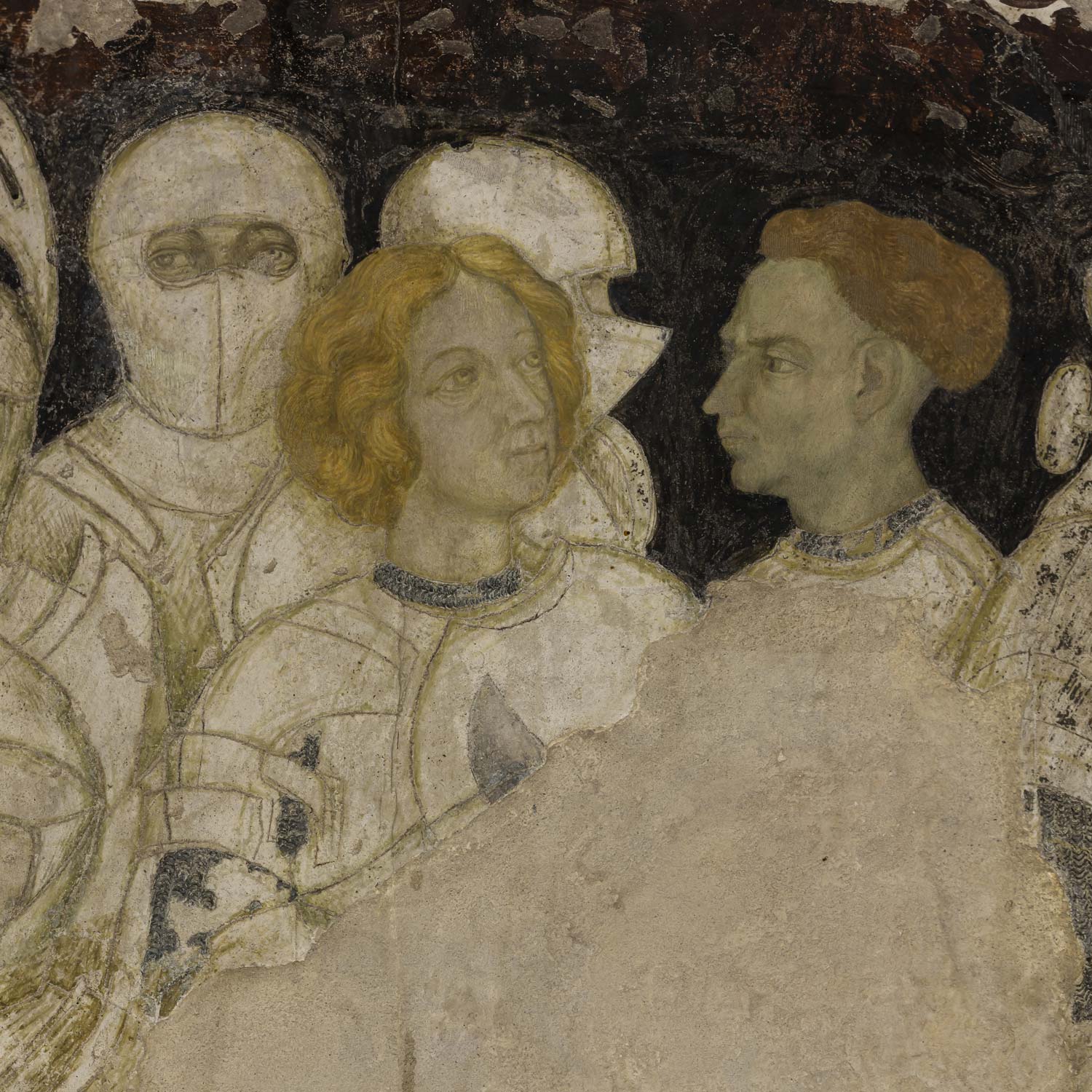
“Pisanello lived in the midst of the tumult of the world,” explains Stefano L’Occaso. “The title of the exhibition alludes to the great battle painted on the walls of the Doge’s Palace and the life of the artist, who, ’courted by the courts,’ also participated with Gianfrancesco Gonzaga, marquis of Mantua, in the occupation of Verona that took place between November 17 and 20, 1439, attracting the wrath of the Council of Ten of Venice, under whose rule the Scaliger city then fell. This event was probably the cause of the forced domicile imposed on the painter in 1442 with a consequent ban on traveling to Mantua. If the relationship between the artist and the court would have survived a few more years, at that date any possibility of Pisanello’s physical presence in Mantua probably ended, where the first document that says he resides in the city is dated July 7, 1422, just six hundred years ago. The chronological coincidence that this exhibition seeks to commemorate, however, is another: the fiftieth anniversary of the exhibition curated by the then superintendent Giovanni Paccagnini, with which what must be considered one of the most important acquisitions in the field of art history in the 20th century was presented. It was Paccagnini who discovered, in the mid-1960s, the Arthurian cycle painted by Antonio Pisano, the Pisanello: the hidden treasure, which everyone thought was lost. Since then, Pisanello’s murals have established themselves as one of the main figurative texts of the early 15th century in Italy, of that period commonly known as Late Gothic, Flamboyant Gothic, International Gothic, or Courtly Gothic.”
Pisanello. The Tumult of the World, involves not only the newly refurbished Pisanello Hall, but also theattigua Sala dei Papi, as well as the rooms on the ground floor, set up with some 30 works by Pisanello and other important artists of the time to show an overview of late Gothic culture in Mantua, displaying an excellent selection of paintings, sculptures and miniatures. The Pisanello room is dedicated to the pictorial cycle, in relation to the preparatory drawings, wall paintings, and exposed sinopias; the Papi room, on the other hand, is set up definitively with historical photos, material traces of an extraordinary tearing operation, some sinopias currently not on display, and everything that allows us to tell the story of the execution technique of Pisanello’s paintings, their discovery, the aforementioned 1972 exhibition, and the restoration work from the 1960s to the present.

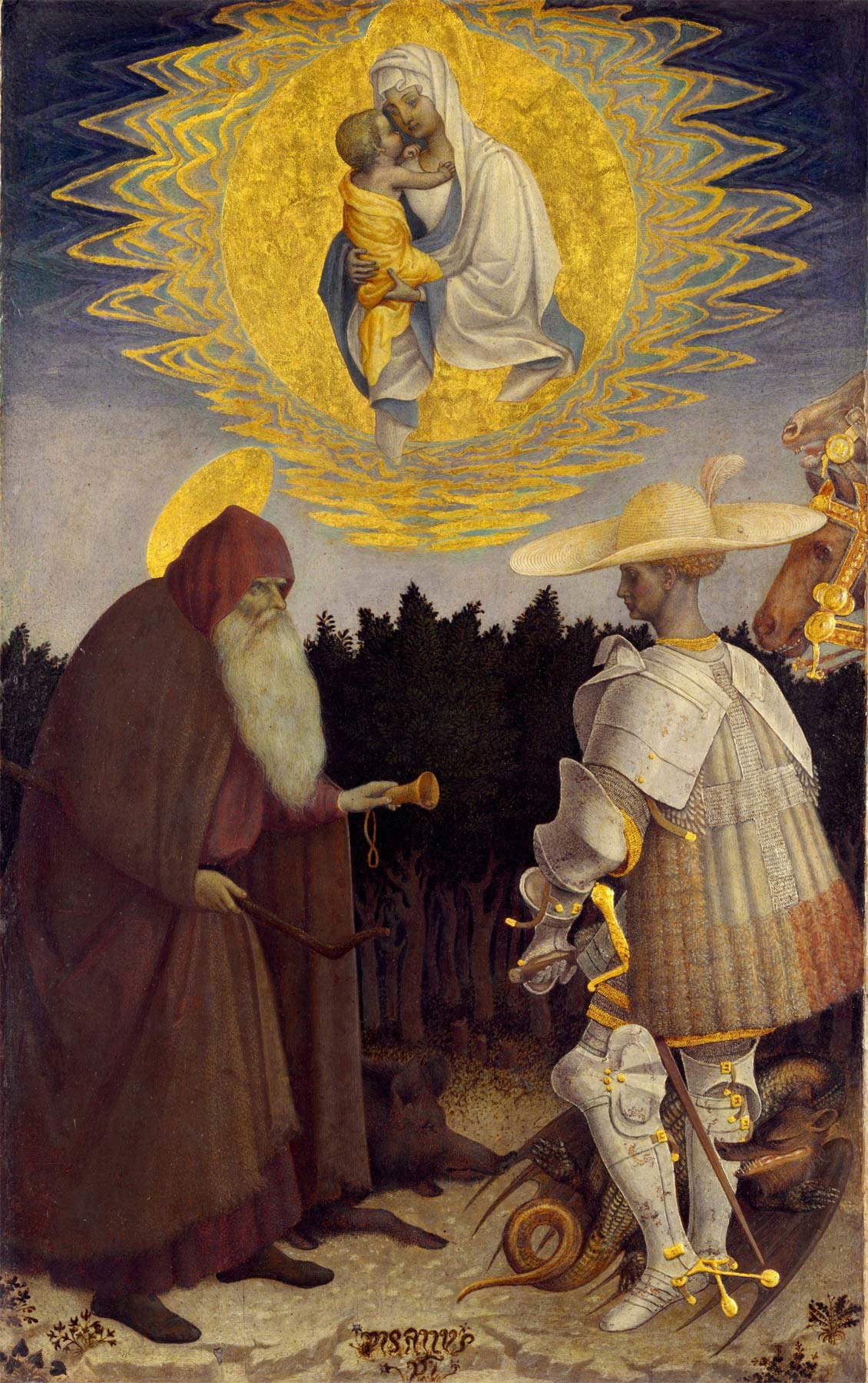
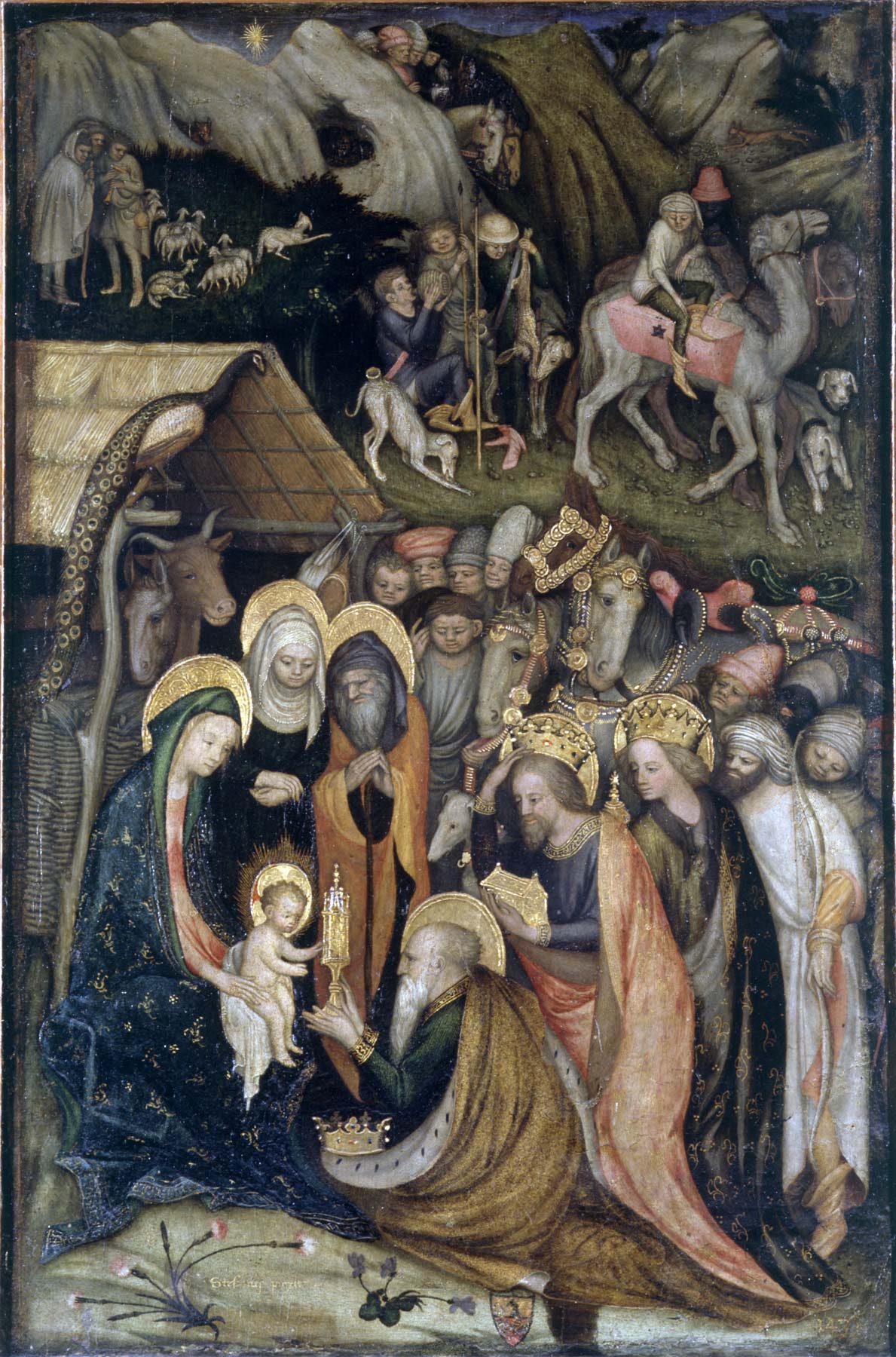
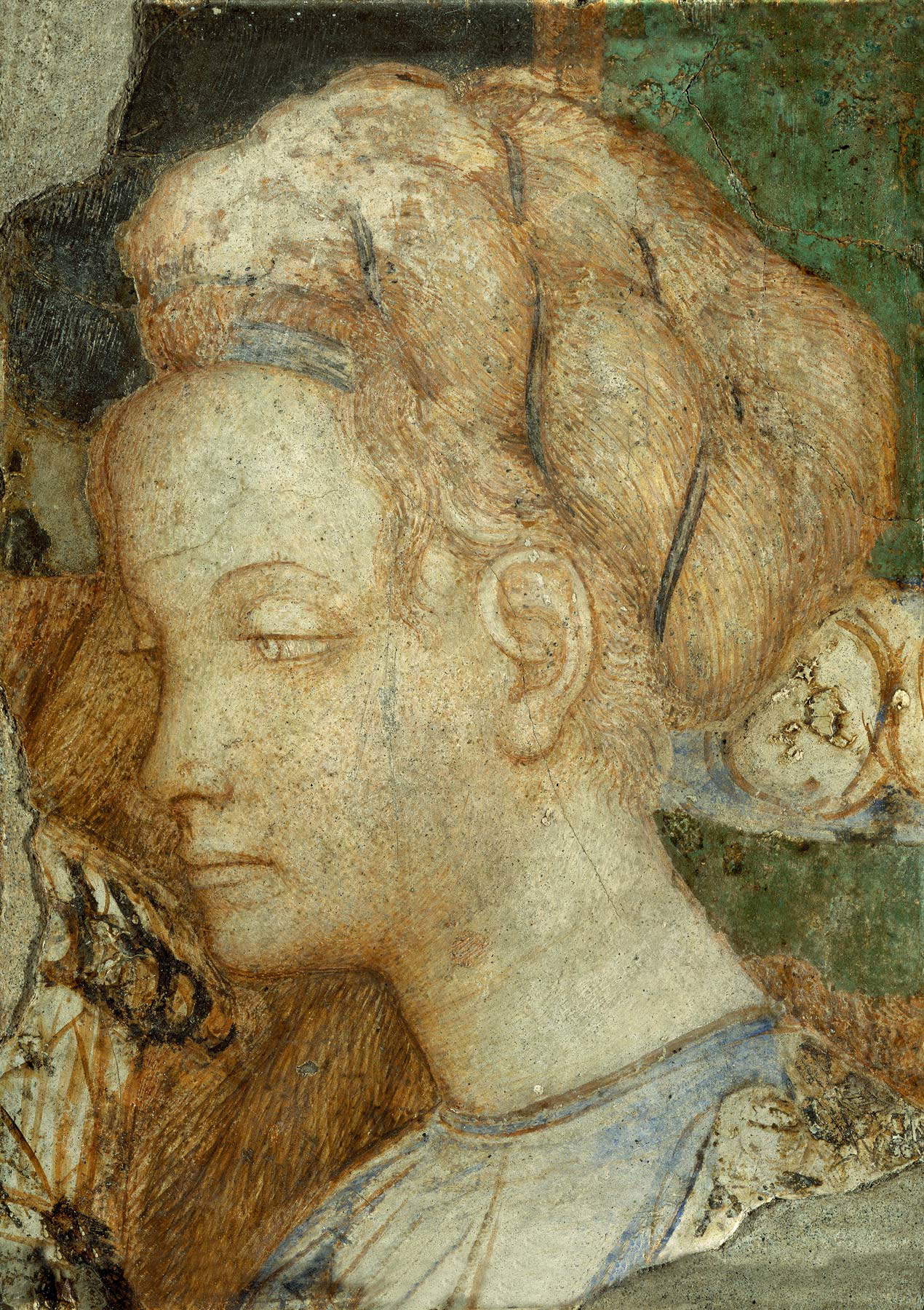
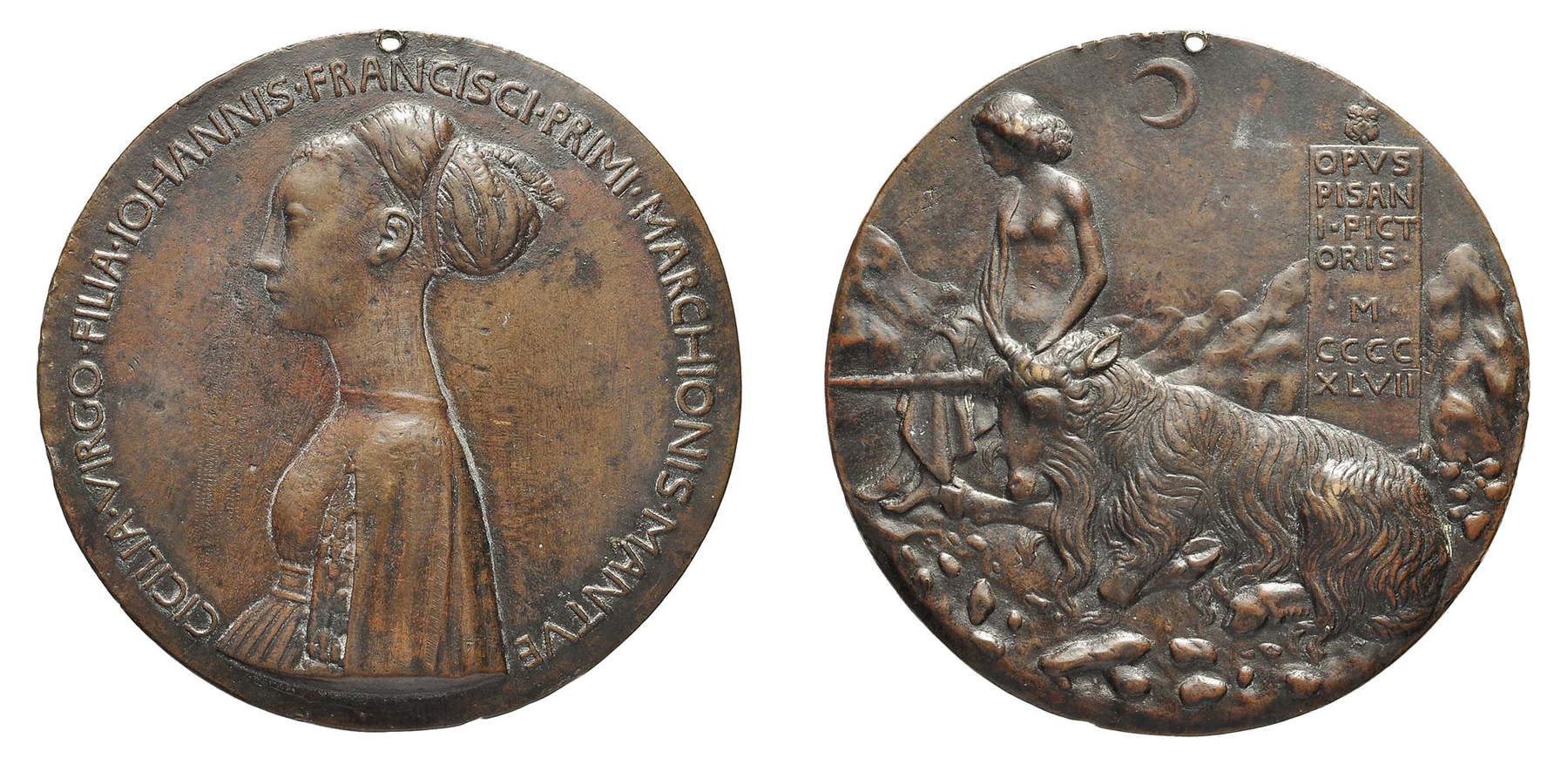
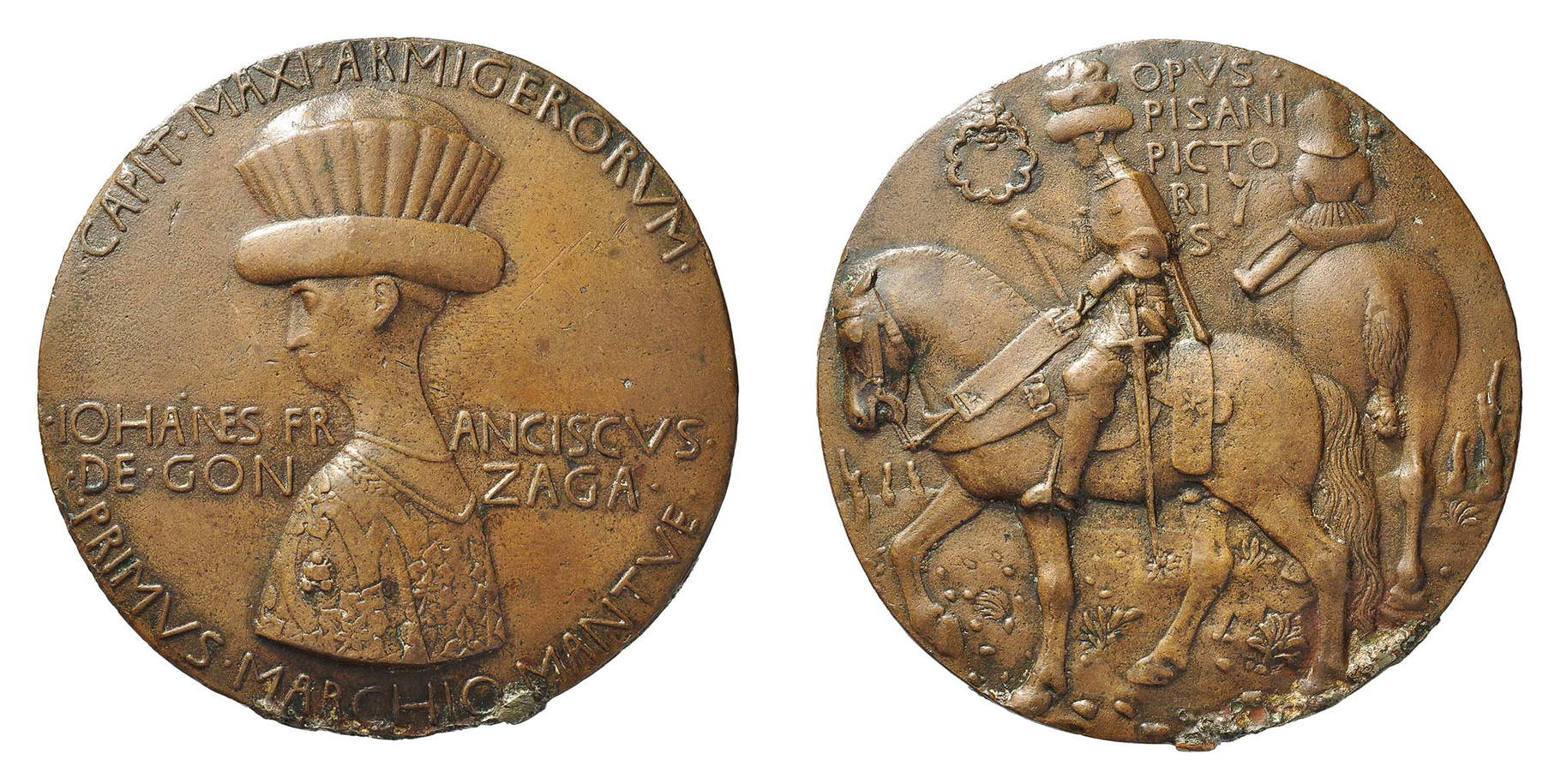
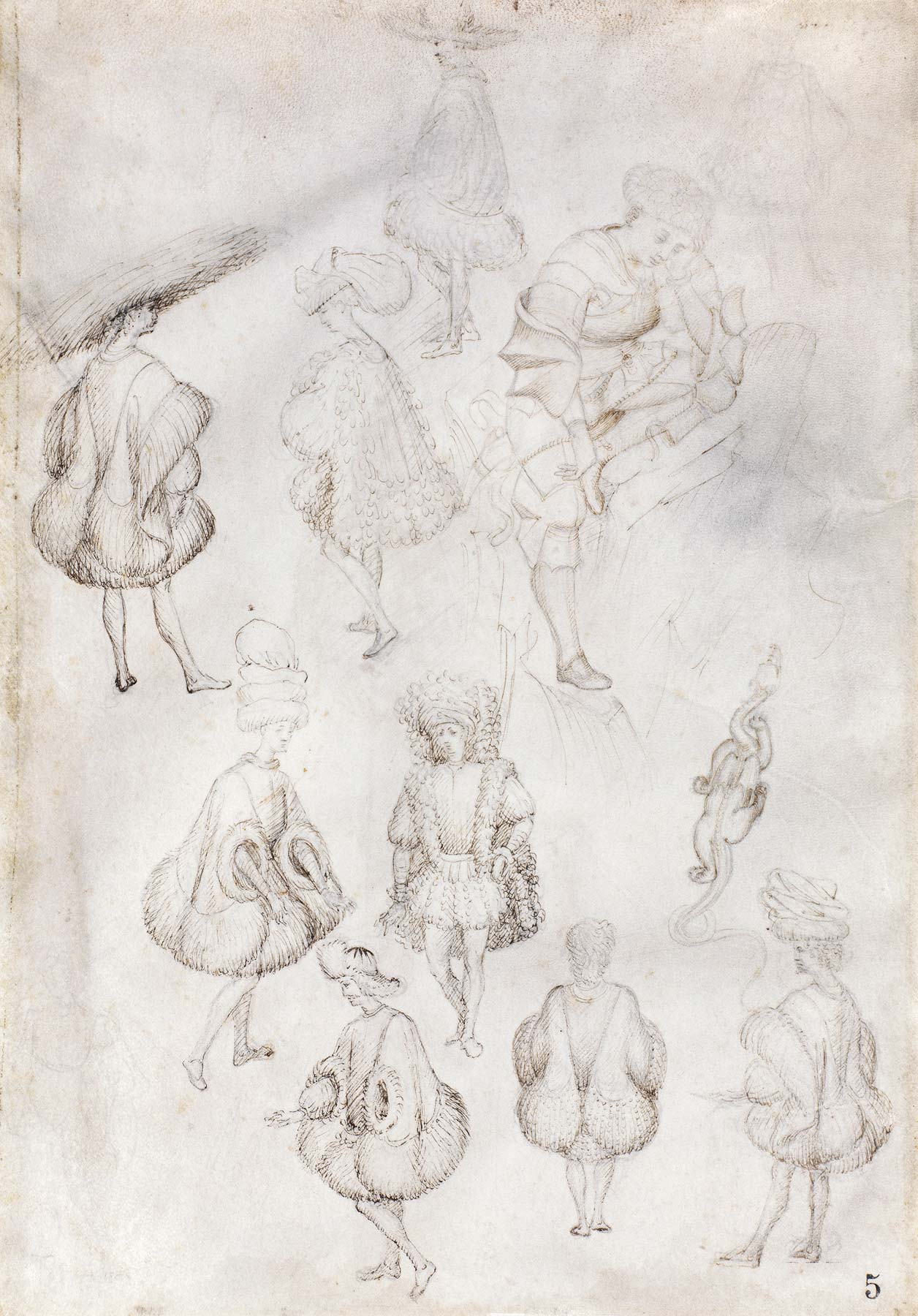
On display are about 30 works including international loans such as Pisanello’s masterpieces the Madonna and Child with Saints Anthony and George from the National Gallery in London, for the first time in Italy since his “departure” in 1862, and drawings from the Louvre Museum in Paris; but also Stefano da Verona’s Adoration of the Magi from the Pinacoteca di Brera in Milan and, last but not least, Pisanello’s precious Madonna of the Quail, a youthful panel by Pisanello, considered among the iconic works of the Museo di Castelvecchio in Verona, also available by virtue of an existing enhancement agreement between the two museums on artistic relations between Verona and Mantua.
An interactive multimedia apparatus completes the display: through touch screen monitors it is possible to view all the details of the chivalric cycle at a magnification never seen before, and to navigate in anaccurate three-dimensional reconstruction (created by 3d designer Matteo Morelli) of the Pisanello Room when it was still called the Princes’ Room, that is, at a historical threshold prior to the interventions that led to the discovery of the cycle. Finally, in the rooms of theAppartamento di Santa Croce on the ground floor, adequately shielded from external light, works are presented that, from around 1400 to the mid-15th century, show and summarize the panorama of coeval artistic culture in Mantua, through the statues of Dalle Masegne already decorating the cathedral; through the works of Stefano da Verona, another protagonist of Pisanello’s age; through the illuminated codices that recount the evolution of the Gonzaga family’s taste, an evolution made exemplary by the missal of Barbara of Brandenburg, begun by Belbello da Pavia and concluded by Girolamo da Cremona, in a now fully Renaissance key. Pisanello’s works not strictly related to the Arthurian cycle also find their home in this room.
Among the contributions to support the exhibition, in terms of continuity and commitment, is that of Fondazione Banca Agricola Mantovana, which has for many years offered its support to the initiatives promoted by Palazzo Ducale, contributing to the enhancement of the national artistic heritage and the dissemination of art and culture in the Mantuan community. The exhibition is accompanied by a catalog published by Electa. Visiting hours: Tuesday through Sunday from 8:15 a.m. to 7:15 p.m. (last admission 6:20 p.m.). Weekly closing day Monday. Box office closing at 6:20 pm. Ticket office: exhibition+visit to the Old Court 9 euros (2 the reduced for young people aged 18 to 25). Ticket exhibition+Castle and Old Court 15 euros, 2 euros the reduced. Free entrance to the exhibition for holders of Abbonamento Musei Lombardia / Valle dAosta and Abbonamento Musei, Treccani Card and Mantova e Sabbioneta card. For information see the Palazzo Ducale website.
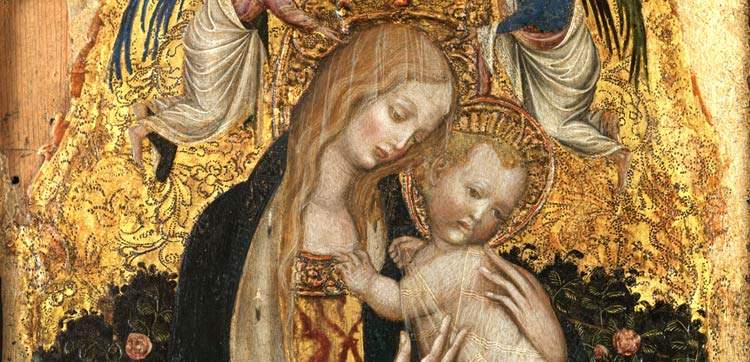 |
| Mantua, an exhibition on Pisanello at the Ducal Palace with thirty works--and a new hall |
Warning: the translation into English of the original Italian article was created using automatic tools. We undertake to review all articles, but we do not guarantee the total absence of inaccuracies in the translation due to the program. You can find the original by clicking on the ITA button. If you find any mistake,please contact us.